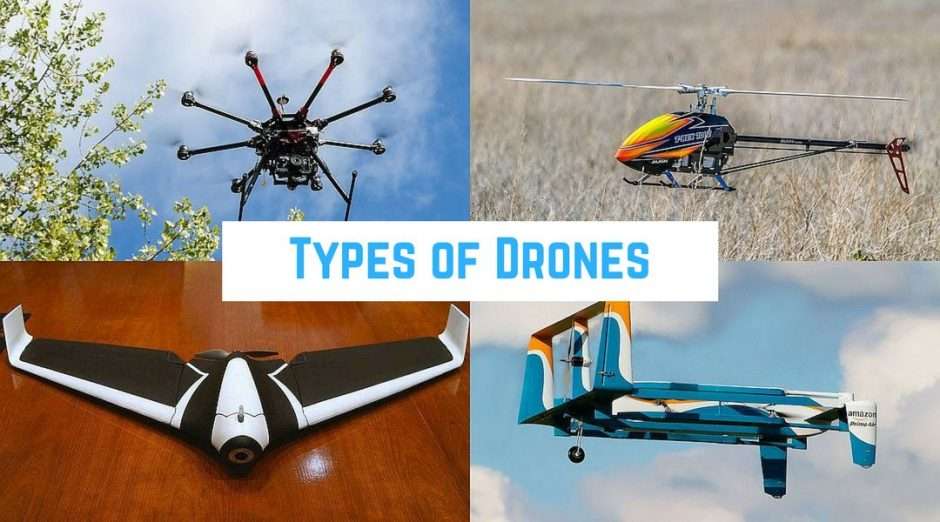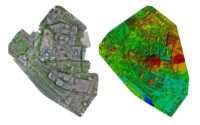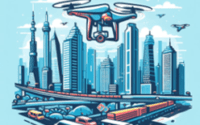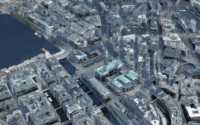Which type of drone is preferred to conduct an aerial survey of large areas?
In the realm of aerial surveys, drones have emerged as indispensable tools, revolutionizing the way we gather data over vast expanses of land. Whether for environmental monitoring, construction site mapping, or agricultural assessment, selecting the right type of drone is paramount for achieving accurate results efficiently. Among the myriad options available, certain drone types stand out as preferred choices for conducting aerial surveys of large areas.
In this comprehensive guide, we delve into the intricacies of drone technology to unveil the optimal choices for conducting aerial surveys over expansive terrains. From fixed-wing drones renowned for their endurance and coverage capabilities to versatile multirotor drones prized for their maneuverability and precise imaging, we’ll explore the strengths and limitations of each type.
Join us as we navigate through the realms of drone technology, unraveling the key considerations that influence the selection process. Whether you’re a seasoned aerial surveyor seeking to enhance your operations or a novice venturing into the world of drones for the first time, this guide aims to equip you with the knowledge needed to make informed decisions and propel your aerial survey endeavors to new heights.
Type of Drones
Fixed-Wing Drones
Fixed-wing drones are popular choices for conducting drone surveys due to their efficient aerodynamics and longer flight times compared to other drone types. These drones resemble traditional airplanes, with wings that generate lift as they move through the air. Their fixed-wing design allows them to cover large areas in a single flight, making them ideal for mapping, agriculture, and infrastructure inspections.
When planning a drone survey, the choice of a fixed-wing drone can greatly impact the efficiency and quality of data collected. These drones are known for their stability in flight, which is essential for capturing clear and precise aerial images. Additionally, their ability to fly at higher speeds enables them to cover expansive areas quickly, making them well-suited for large-scale survey projects.
Rotary-Wing Drones
Rotary-wing drones are a popular choice for conducting drone surveys in Delhi due to their versatility and maneuverability. These drones are equipped with multiple rotors that enable them to take off and land vertically, making them ideal for navigating urban landscapes and confined spaces. With the ability to hover in place and easily change direction, rotary-wing drones can capture detailed aerial imagery for various surveying applications in the bustling city of Delhi.
The compact size and agile nature of rotary-wing drones make them well-suited for capturing high-resolution images of buildings, infrastructure, and landscapes in Delhi from different angles and elevations. This flexibility allows for precise data collection for urban planning, asset inspection, and environmental monitoring. Additionally, rotary-wing drones can be equipped with advanced sensors and cameras to enhance the quality of data gathered during drone surveys in Delhi, providing valuable insights for decision-makers and project managers.
Hybrid VTOL Drones
Hybrid VTOL drones offer a versatile solution for various aerial applications, including drone survey in India. With the ability to take off and land vertically like a quadcopter and transition to forward flight like a fixed-wing aircraft, these drones combine the benefits of both designs. This feature allows hybrid VTOL drones to access hard-to-reach areas, making them well-suited for conducting detailed surveys in diverse terrains.
One of the advantages of using hybrid VTOL drones for drone survey in India is their extended flight range compared to traditional multi-rotor drones. The transition to fixed-wing flight mode enables these drones to cover larger distances efficiently, making them ideal for long-distance surveys. Additionally, the hybrid design enhances stability during windy conditions, ensuring reliable data collection even in challenging environments.
Multi-Rotor Drones
Multi-rotor drones have gained popularity in various industries due to their agility and versatility. These drones exhibit the ability to hover in place, make sharp turns, and fly in confined spaces with ease. With advancements in technology, the best drone survey company in India is now using multi-rotor drones to capture high-resolution imagery for mapping and aerial surveying projects. Their compact size and stable flight characteristics make them ideal for capturing detailed data in urban environments or areas with limited access.
The best drone survey company in India recognizes the efficiency and effectiveness of multi-rotor drones in providing accurate and timely aerial data. These drones come with high-quality cameras and sensors capable of capturing precise images for photogrammetry and 3D mapping applications. By utilizing multi-rotor drones, survey companies in India can streamline their data collection processes, reduce operational costs, and deliver superior results to their clients.
Gas-Powered Drones
Gas-powered drones have gained popularity in the field of aerial surveys due to their extended flight times and higher payload capacities compared to electric-powered drones. Users commonly employ these drones to efficiently cover vast areas in large-scale mapping projects. The ability of gas-powered drones to carry heavier equipment, such as high-resolution cameras and LiDAR sensors, makes them ideal for conducting detailed and accurate surveys.
In addition to their longer flight times, gas-powered drones are also preferred for their versatility in various weather conditions. This makes them a reliable choice for conducting surveys in challenging environments where electric-powered drones may struggle to perform efficiently. The robust design of gas-powered drones allows them to withstand rough weather conditions and continue collecting data for extended periods, making them a valuable asset for conducting comprehensive LiDAR surveys in diverse landscapes.
Electric-Powered Drones
Electric-powered drones have gained significant popularity in recent years due to their eco-friendly nature and efficient operation. Drone survey companies in Delhi widely use these drones to conduct aerial surveys and mapping projects with precision and accuracy. The electric-powered drones offer a quiet and stable flight experience, making them ideal for capturing high-quality aerial footage and data for various industries.
The advancements in battery technology have greatly improved the flight time and overall performance of electric-powered drones. Drone survey companies in Delhi prefer these drones for their cost-effectiveness and low maintenance requirements, allowing them to maximize their operational efficiency and productivity. With the growing demand for accurate and reliable aerial survey services, electric-powered drones have become a go-to choice for professionals looking to streamline their data collection processes and deliver accurate results to their clients.
Solar-Powered Drones
Solar-powered drones utilize solar panels to generate electricity for their propulsion systems, significantly extending their flight time compared to drones solely relying on batteries. These drones harness the power of the sun, making them more sustainable and environmentally friendly options for various applications such as surveillance, monitoring, and mapping. By continuously recharging during flight, solar-powered drones can operate for prolonged periods, offering long-endurance capabilities ideal for missions requiring extended aerial coverage.
The integration of solar power technology in drone design presents opportunities for increased operational efficiency and reduced dependency on traditional energy sources. With advancements in solar panel technology and lightweight materials, the efficiency and performance of solar-powered drones continue to improve, enabling longer flight times and enhanced capabilities for data collection and aerial surveys. As the demand for sustainable drone solutions grows across industries, the development and adoption of solar-powered drones are poised to play a significant role in the evolution of aerial technologies.
- Solar-powered drones utilize solar panels to generate electricity for their propulsion systems
- These drones have significantly extended flight time compared to battery-powered drones
- They are designed for surveillance, monitoring, mapping, and other applications
- Continuous recharging during flight allows for prolonged operation and long-endurance capabilities
The integration of solar power technology in drone design offers opportunities for increased operational efficiency and reduced reliance on traditional energy sources. Advances in solar panel technology and lightweight materials have led to improved efficiency and performance of solar-powered drones. This results in longer flight times and enhanced capabilities for data collection and aerial surveys. As the demand for sustainable drone solutions increases across industries, the development and adoption of solar-powered drones are set to play a crucial role in the advancement of aerial technologies.
Payload Capacity of Drones
When considering drones for aerial surveying or other tasks, payload capacity plays a crucial role in determining the drone’s capability. The payload capacity of drones refers to the maximum weight they can carry while maintaining optimal performance. Factors such as the size of the drone, its power source, and its design influence how much weight a drone can carry, impacting its versatility and usability in various applications.
Users often favor drones with higher payload capacities for tasks requiring the transportation of equipment, sensors, or other payloads. For example, drones used in agriculture may need to carry imaging sensors for crop monitoring, while those used in search and rescue operations might need to transport medical supplies or communication devices. Understanding the payload capacity of drones is essential for selecting the right drone for specific missions, ensuring that it can fulfill its intended purpose effectively and efficiently.
Flight Time of Drones
Drones have varying flight times depending on their design and power source. Electric-powered drones typically offer shorter flight times compared to gas-powered or hybrid drones. The flight time of a drone is crucial for accomplishing tasks such as aerial photography, surveillance, or mapping accurately within a single flight session. Pilots must consider the flight time when planning missions to ensure that the drone can cover the required area or complete the task before needing to land for a battery change or refuel.
Factors that can impact the flight time of drones include the weight of the payload, weather conditions, and flying speed. Users prefer drones with longer flight times for applications that demand extended airtime, such as search and rescue operations or large-scale mapping projects. As technology continues to advance, manufacturers are striving to increase the flight times of drones by developing more efficient batteries, lightweight materials, and aerodynamic designs. Pilots and operators must carefully assess the flight time capabilities of drones when selecting the most suitable aircraft for their specific needs and budget constraints.
Cost Considerations for Aerial Survey Drones
When considering the cost of aerial survey drones, it is crucial to account for more than just the initial purchase price. Factor in additional expenses such as maintenance, repairs, upgrades, and training into the overall cost. Furthermore, when assessing the budget, it’s essential to consider the cost of software, data processing, and any necessary accessories like cameras or sensors to ensure an accurate assessment.
Another important cost consideration for aerial survey drones is insurance. Drone insurance can provide coverage for accidents, damages, theft, and liability issues that may arise during operations. In the long run, investing in comprehensive insurance can help protect your investment and mitigate potential financial risks. Additionally, researching and comparing different insurance providers to find the most suitable coverage for your specific needs and budget is a prudent step in the cost evaluation process.








